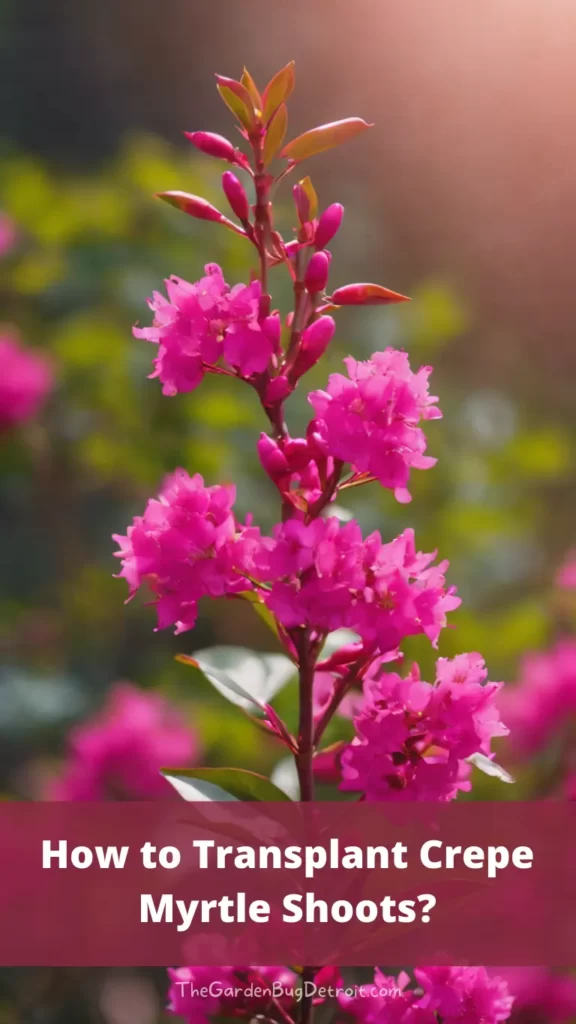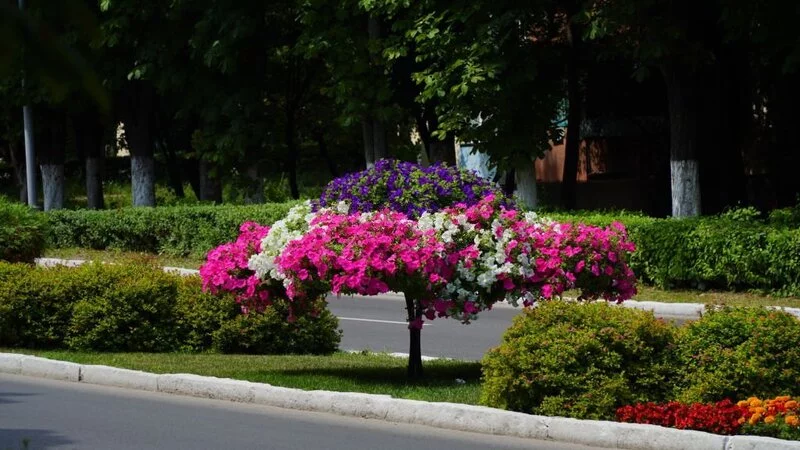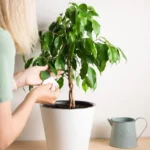Crepe myrtles are a popular option for bringing dynamic color and charm to landscapes, and today we’ll learn everything about them. Crepe myrtles are sure to win the heart of any gardener with their colorful flowers and scaly, peeling bark. But what about the new growth near the tree’s trunk? Let’s study them right now, shall we?
- 4 Purple Flowering Ornamental trees – shipped in original containers
- Purple bloomer – blooms last over 100 days all summer long
- Drought tolerant – crapes love the heat!
- Very interesting bark that exfoliates and becomes smooth
- Grown by Crape Myrtle Guy in quart containers and about a foot tall at delivery
Understanding Crepe Myrtle and Its Growth Habit
Charming trees known as crepe myrtles are indigenous to the tropical regions of Southeast Asia. Beautiful clusters of blooms in hues like pink, lavender, crimson, and white have made them famous. The adaptability of these trees makes them a great choice for gardening in a variety of climates.
The growth pattern of crepe myrtles is very interesting. Suckers are the offshoots that these plants send off from their main stem. If these sprouts are given enough time to mature, they will produce entirely new trees. They take on the same traits as their parent tree and can produce equally stunning blossoms.
Identifying Crepe Myrtle Shoots
Typically, the trunk of a crepe myrtle is where new shoots, known as suckers, emerge. They emerge from the ground as delicate green shoots that snuggle close to the main trunk. These stems eventually mature into whole trees with leaves that are clones of the parent’s.
Crepe myrtle young shoots have a very distinct look. They’ll emerge from the trunk’s base or the tree’s roots at ground level. Well done if you’ve noticed these sprouts! New crepe myrtle trees can be grown from these cuttings. You can use these new branches to start new crepe myrtle plants and grow your existing ones.
When and How to Transplant Crepe Myrtle Shoots
When transplanting crepe myrtle shoots, timing is crucial. Before new growth emerges, late winter or early spring is the greatest time to accomplish this. This will allow the transplanted shoot time to set down roots before it is asked to sustain a new growth spurt.
You’ll need a sharp shovel or spade, a pot with well-draining soil (if you’re not planting directly in the ground), and a lot of patience to successfully transplant.
- First, locate the shoot you want to transplant. Dig around the base, carefully keeping some of the parent tree’s soil attached. This helps reduce transplant shock.
- Once you have your shoot, it’s time to move to the new location. Whether it’s a pot or a new spot in the ground, make sure it has well-draining soil and access to sun.
- Dig a hole in the soil that’s large enough to accommodate the root ball of the shoot. Place the shoot in the hole, making sure it’s at the same depth as it was previously growing.
- Backfill the hole with soil, tamping down gently to remove any air pockets. Water the transplanted shoot well and keep the soil moist, but not waterlogged.
- Growing indoors is easy under the right conditions; Miracle-Gro Houseplant Potting Mix combines key elements plants need to thrive
- Recommended for growing beautiful indoor houseplant varieties like Pothos, Spider Plants, Monstera, Philodendron, English Ivy and more
- This indoor plant soil is less prone to gnats, thanks to the combination of perlite, sphagnum and peat moss that’s just right
- Certified by the Mulch & Soil Council as a quality product in compliance with industry standards
- A single 4-qt bag fills an 8-inch container; for even more spectacular results, start regular feedings with Miracle-Gro Plant Food 30 days after planting
Aftercare for Transplanted Crepe Myrtle Shoots
If you want your newly transplanted crepe myrtle shoots to thrive and mature, you must provide them with proper aftercare. It’s important to water the shoot every day for the first two weeks until you see fresh growth, which indicates that it has taken root. Watering can be reduced after this point.
To give the shoot a nutritional boost, apply a balanced, slow-release fertilizer at its base in the spring. Always use a product in accordance with the dosing recommendations provided.
- Our best formula, fortified with 11 essential nutrients
- Works with virtually all plant varieties, in all growing conditions
- Feeds up to 6 full months
- Apply with confidence to potted plants, indoors or outdoors
- No-burn pledge when used as directed
As your new crepe myrtle begins to develop, you should prune it so that it has a healthy, beautiful framework. Keep in mind that you want to promote a tree that is strong and resilient, so that it can bear gorgeous summer flowers.
Conclusion
Crepe myrtle branch transplanting may be a fun and rewarding experience. You may increase the attractiveness of your garden and learn more about the cycle of these magnificent trees at the same time. Careful maintenance and TLC can have you enjoying the beauty of fresh crepe myrtles in no time. All the best with your gardening endeavors!







